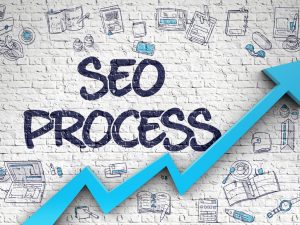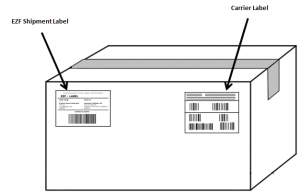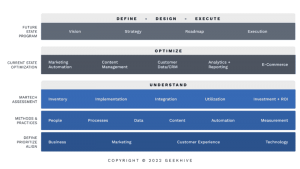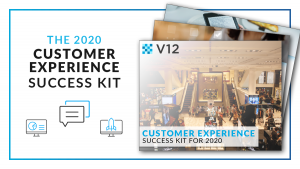Search engine optimization isn’t as straightforward as it sounds. Although, SEO experts have been toiling hard for over a decade now—changing algorithms, user preferences and skill sets have forced them to evolve. In the simplest of terms, any process of optimization might take a lot of time to materialize perfectly. As we all are hard pressed for time, opting for quicker optimization techniques might just work in our favor.
There is a thing called ‘Correct’ Optimization which should come into the picture only after the base has been established, via quicker techniques.
As a marketer or an SEO expert, you need to let go of perfection— in order to kickstart any venture in a positive direction. Trust me when I say there is a perfectionist in each one of us— looking to work even on the minor points and put everything together.
That said, the following approach should only be considered if you are already an established organization— looking to scale newer heights. For a startup, striving for perfection isn’t always a good idea. In this post, we will be talking about the benefits of quick optimization and the several metrics, associated with it. The idea here is to start with things rather quickly and perfect the same eventually.
Needless to say, even the raging software industry has opted for this approach— segregating any mission into 5 parts— ‘Create’, ‘Test’, ‘Launch’, ‘Fix’ and ‘Improve’.
Immediate gains are tempting and should be vouched for.
You can always trim the edges once the fence has been put up.
Here is how quick optimization needs to be approached – regardless of the business genre and nature of the concerned website:
Keyword Research
Those who consider quick keyword research as obsolete need to get their facts right. There are instances when keywords can be analyzed and enlisted faster than even fulfilling other metrics. However, you must look to approach the same in phases. As a website, you might be tempted towards collecting every keyword for your genre and work with the same which in turn isn’t a great way to proceed.

Instead, you can look to understand topics and relatable phrases which make more sense to the audience. Moreover, in the era of RankBrain— it is desirable to go in-depth with keyword analysis. One such example would be the selection of identity cards and similar phrases for quick optimization. While the former can have many forms and combinations, it would be better if websites can go with specific entities like Aadhar card, Voter ID, green card, PAN card and a few more to carve out a niche for themselves.
Not just identity cards and their more relatable versions, you can apply these concepts to a wide-range of products and services. Polishing and addressing keywords specifically can happen later as for the time-being simple, searchable results make all the difference.
Navigation
Now when the keywords have been zeroed in, it’s time to enlist landing pages to the ones which could drive in the most number of searches. This is where the concept of primary navigation crawls in as you need to designate landing pages to the ones which are unique in nature.
For example, if you own a clothing website— it is important to find the best set of keywords, facilitating searches and conversion. While tops, dresses, trousers are the automatic selections— businesses can also look to get more specific like summer clothes, winter wear and some other phrases. Similarly, brands can also be addressed via the landing pages with Forever 21, Armani and other notable names selected as the preferred phrases.
There is no point dedicating a landing page to something that is massively unique. Rather, you can opt for a commonly searched terminology and work on the same for driving in more sales. Pairing primary navigation with secondary ones like blog posts and redirections can also come in handy.
Navigation is therefore an important aspect of search engine optimization, helping businesses prime their websites in a quick and hassle-free manner.
Architecture
Usually, working on the website architecture isn’t a quick task barring a few special circumstances. Firstly, get rid of broken links which simplifies the job to a large extent. Next approach would be to define a priority list for the tasks by putting website development at the top of the pecking order. Be it creating landing pages for specific keywords or setting up the entire SEO framework using the likes of Yoast— there are a few website elements which can be designed quickly.
Bigger stuff can always be addressed afterward.
Title Tags
There can be hundreds of pages to work with but customizing title tags seems to be a pretty hassle-free strategy. Detailed optimization is guaranteed and working on title tags can easily boost search rankings and even improve the CTRs. Moreover, there are two strategies to address the same.

Firstly, one can optimize each one manually— an approach mostly used by firms offering services. Another technique is to put through the title-tags via a dynamic schema— a process implemented by e-commerce establishments. Either way, businesses prefer using compelling and soul-stirring title tags for moving up the rankings— facilitating higher conversions.
Meta Descriptions
Unlike title tags which help improve search rankings, meta descriptions show underneath the former, once the user searches for something specific. As a business, this offers better click through rates as users now have a brief idea of what the website is all about. Although ranking improvements aren’t possible with meta descriptions, it is still a quick optimization technique which needs to be highlighted.

Heading Tags
This aspect is often overlooked but can help you with conversions. People who end up on your landing page must be greeted with proper headings as the topmost piece showcases whether the visitor is on the correct or incorrect page.
In addition to the main heading, other tags are also important as they can actually compel readers to stay on the page and keep reading. Moreover, headline tags fall under the category of quick optimization and need not be beefed up with SEO-centric terminologies. They should be kept concise and intriguing.
Understanding Correct SEO
Now when you have justified speed by keeping up with all of the mentioned metrics, heading over to the world of perfection seems legit. While you need not nitpick about the bygones, detailed optimization is something that you would readily benefit from. You were never supposed to go through quick optimization without making mistakes. That said, this is your chance of fixing and sharpening the existing skills— with detailed analysis.
While the quick process would take somewhere between a few hours or days, correct optimization is all about toiling and fixing the preexisting techniques— in the best possible manner. However, never allow perfection to be a roadblock to all your progressive techniques.
Trust me, quick optimization is the way to go in this closely competed arena— especially in a RankBrain-centric landscape.
Digital & Social Articles on Business 2 Community(41)








